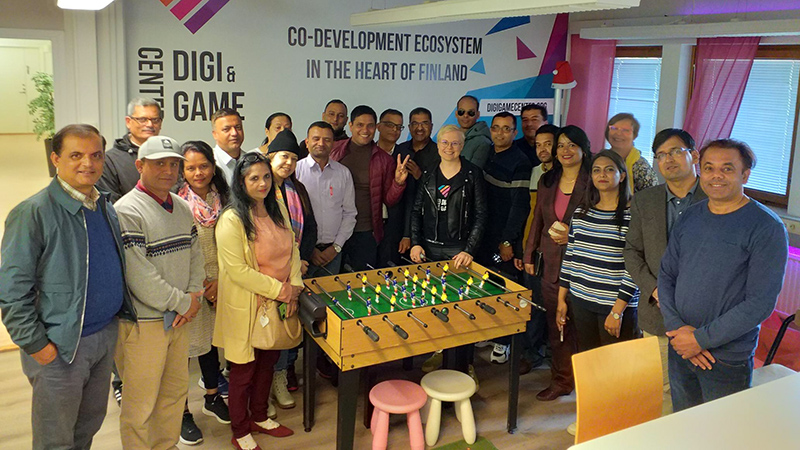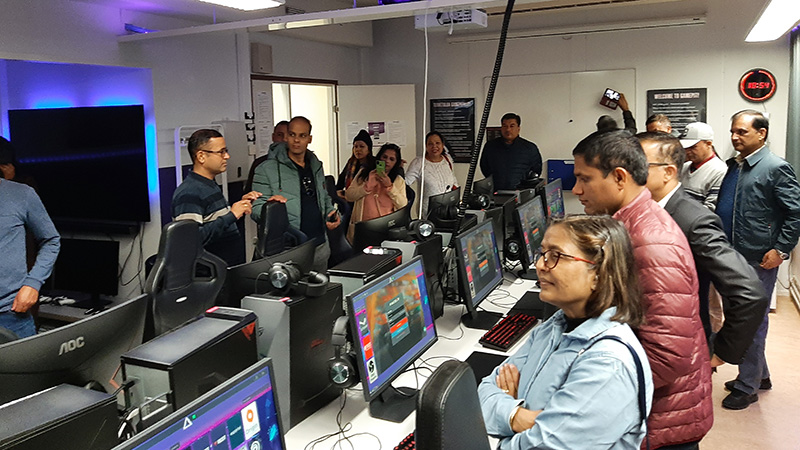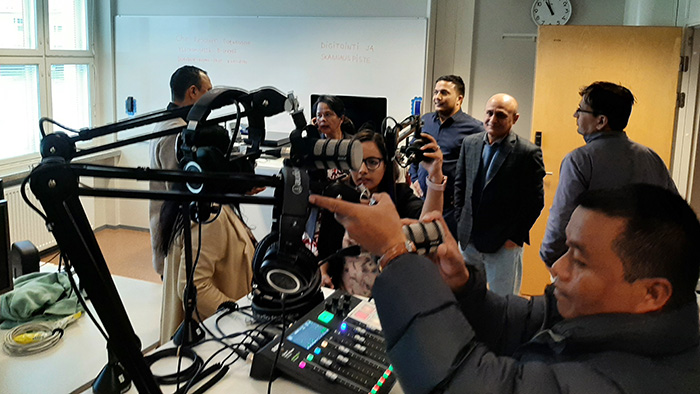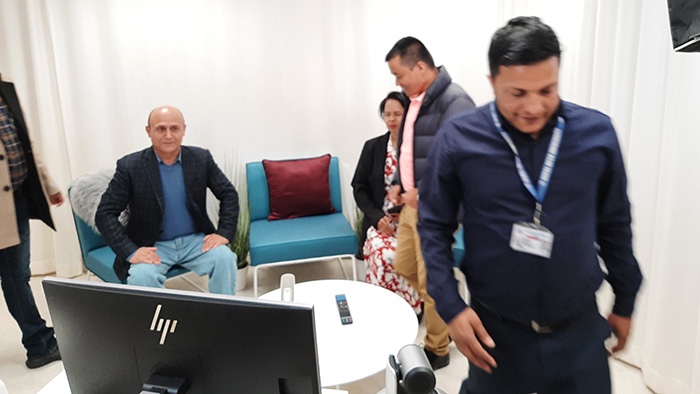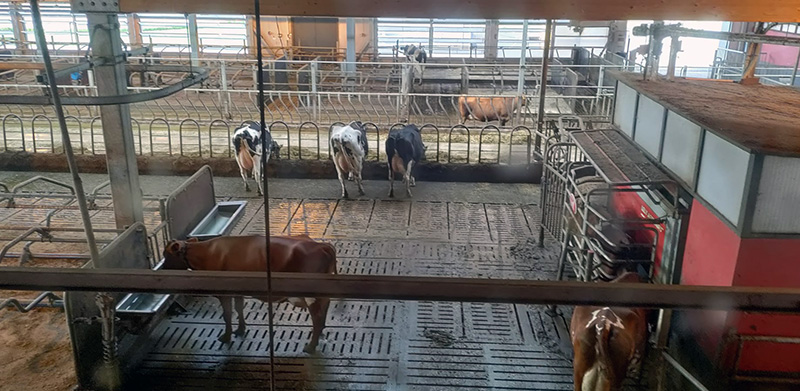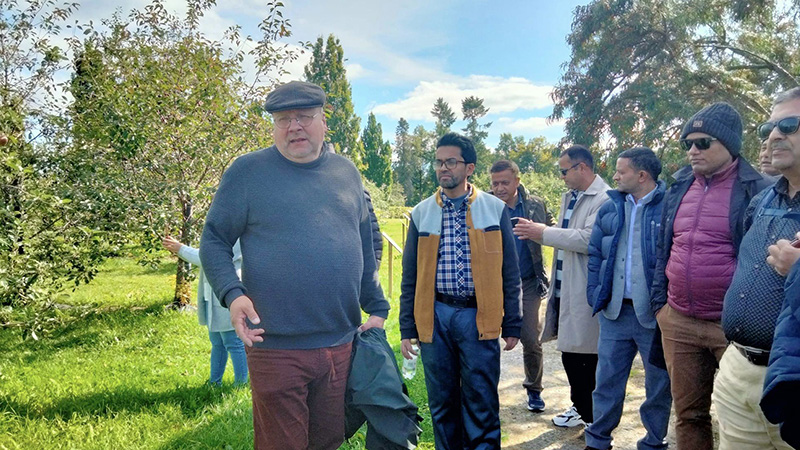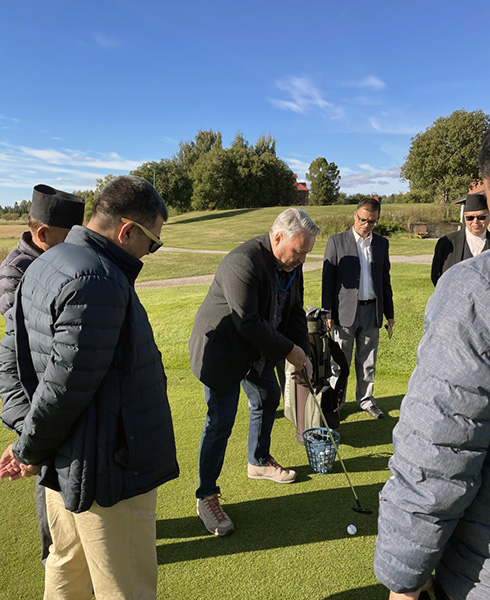Curriculum co-creation process and digital exposure for Nepalese teachers in Finland
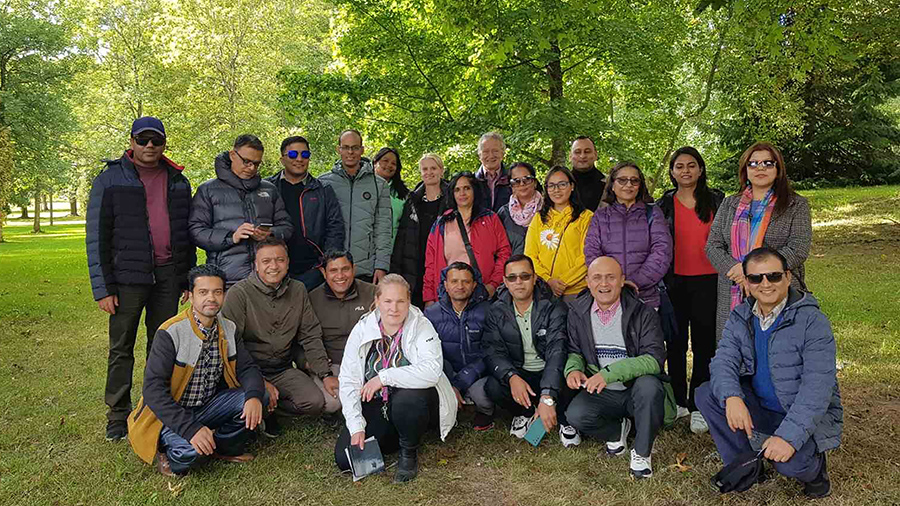
Two intensive workshop weeks were dedicated to working on curriculum co-creation in Finland. Over 20 Nepalese university teachers spent one week at HAMK and one at Jamk University of Applied Sciences working on finalising their newly developed courses with their Finnish colleagues. Both Tribhuvan University and Nepal Open University have been developing eight courses in the blended learning format to enhance 21st century skills pedagogy in Nepal. The process of curricula co-creation has been a new and heavily work-laden experience for all parties involved.
Curriculum Co-creation
We conceptualized the collaborative curriculum creation work under the frame of co-creation. Co-creation as a concept has emerged in the field of education in order to enhance development of complex processes. For example, involving students in the curriculum creation process has gained research attention in recent years. Lubicz-Nawrocka (2021) has found students benefiting from the co-creation, for example, in terms of improved engagement and enjoyment. He defined curriculum co-creation as being the value-based implementation of an ongoing, creative, and mutually beneficial process of staff and students working together to share and negotiate decision-making about aspects of curricula.
Although very little is known about how co-creation could support the development of curricula in an international collaboration, we still wanted to utilise the concept in our collaborative work. We have framed our work as a case study, focusing on curriculum co-creation that occurred as a collaboration between the faculties of two universities in Nepal and two universities of applied sciences in Finland with the help of HEI-ICI project in the 21st Century Skills Pedagogy in Nepal.
Our case study is ongoing, but feedback data received from Nepal indicates that the teachers were satisfied in all five aspects required: interaction and collaboration, knowledge sharing, meaningfulness of the process, contribution to the practical curriculum development work and being an equal member of the team. Similarly, the feedback from the Nepalese teachers of the intensive weeks in Finland shows that the co-creation process was beneficial for them. However, the question remains, will the co-creation occur only when we are synchronously working on the curricula, or will it continue asynchronously in Nepal?
Thrilled by digital learning environments
Nepalese teachers had many opportunities to explore multiple digital environments available at Jamk and HAMK for staff members and students. Digi & Game Centre at Jamk, launched as part of the Sustainable Digi & Game Ecosystem project in 2020, attracted the Nepalese teachers’ attention as the centre’s concept is unknown in Nepal. It is an ecosystem connecting a wide range of companies, educational institutions, start-ups, entrepreneurs, students, projects around digital business and digital services and the game industry.
The visitors had the possibility to hear and see, how students create virtual games and, how they collaborate with companies. Also, the number of game computers and other facilities to create games were a source of wonder.
Jamk’s Digi Centre at its main campus “exploded” the visitors’ minds. Hands-on experience with a podcast table, virtual lightboard, digital drawing tablet excited everybody. Exploring the green, blue, black and webinar rooms brought forth equal enthusiasm.
Most of the technologies and digital environments we explored could be useful for learning material production also in Nepal. However, the Nepalese teams require an honest and critical discussion to decide which , if any , of the facilities seen are suitable for them.
HAMK University of applied sciences
In addition to familiarising themselves with the digital learning environments in HAMK and Jamk, the Nepalese group had the opportunity to explore physical learning environments in different campuses such as HAMK’s Mustiala Agricultural Campus, Riihimäki Campus and Lepaa Horticulture Campus as well.
The group photo on top of this article was taken at HAMK´s Mustiala campus.
The participants were completely mesmerised by the pure and beautiful nature in Mustiala and Lepaa campuses. In Mustiala, the cowhouse cleaning robot drew the group’s attention as well as the size and wellbeing of the cows. They also appreciated the hands-on activities as they observed students conducting such tasks as conducting soil analysis.
Our Nepalese colleagues were also excited to meet Nepalese second-year mechanical engineering and production technology student, Sanju Shestra, the Nepalese faculties Development Engineer, Milan Gautam, and Student Assistant, Shankar Prajapati, at the Riihimäki campus. With Sanju Shestra’s lead, the group had the chance to compare differences in studying in Finland and Nepal. Sanju offered them first-hand views on the matter saying that in Finland the students are more self-regulated and responsible for their own studies. Additionally, the group had a hands-on activity on robotics facilitated by Milan Gautam, thereafter Shankar Prajapati explained about 3D printing with a few practical examples.
After visiting HAMK Lepaa Horticulture Campus and the tour of the Lepaa winery, the participants had the opportunity to try frisbee golf and golf. Particularly, because golf is considered an elite sport in Nepal – the country has only two golf courses – the group was excited to practise their putting. After a while of practicing, Senior Lecturer Simo Uusinoka organised a playful team competition in putting. The team members took it in turns to putt with the aim of getting the ball in the hole as a team effort.
As a whole, the two-week long field trip to Finland with a versatile programme and plethora of visits was an eye-opening experience for our Nepalese colleagues. They saw a lot of examples and gained many ideas about how to develop their own teaching practices to better match the 21st century learning needs in Nepal. The visit was rewarding and useful also for Jamk and Hamk as we all learned a lot. Thank you colleagues from Tribhuvan University and Nepal Open University visiting us and welcome back.
References:
Lubicz-Nawrocka, T. & Bovill, C. (2021). Do students experience transformation through co-creating curriculum in higher education? Teaching in Higher Education. DOI: 10.1080/13562517.2021.1928060
The Higher Education Institutions Institutional Cooperation Instrument (HEI ICI) supports cooperation projects between higher education institutions in Finland and the developing world. The projects support the HEIs as they develop their subject-specific, methodological, educational and administrative capacity. The programme is funded by the Ministry for Foreign Affairs of Finland and administered by the Finnish National Agency for Education.
Blog authors
Eila Burns, Senior Researcher, Jamk University of Applied Sciences
Kirsi Korkealehto, Senior Lecturer, HAMK University of Applied Sciences
